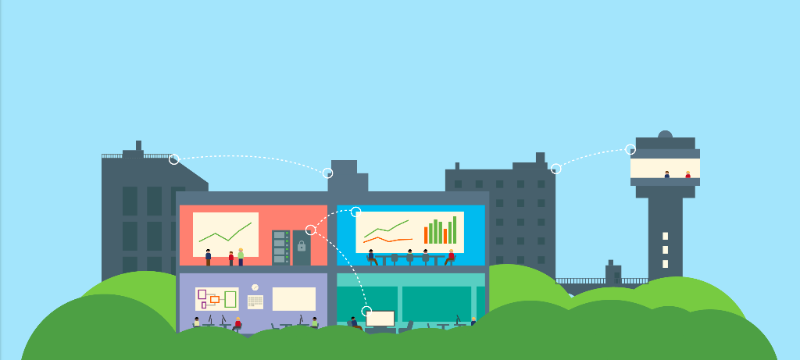
ODINE startup OpenSensors.io IoT Tutorial – Part 1: An Introduction for the Absolute Beginner
“The IoT is the network and connection of everyday devices to the Internet, with the aim of improving the quality of life and making business processes more efficient. This is enabled by the real-time integration of data across both devices and application domains, such that the overall insight is bigger than looking at the data in isolation.”
The above is a very broad definition and some argue it’s mixing apples and pears. If you’ve been in tech for twenty years, you may have seen things connected to the Internet even before the very concept had a name. When the first webcam reported the status of a coffee maker in the Trojan Room at the Computer Science Department at the University of Cambridge back in 1993, people didn’t call it IoT. Industrial control systems integrated machine data and allowed command-and-control over large distances using Internet connections date back to that era as well. It wasn’t until the last decade that the term M2M (for machine-to-machine communication) emerged for the automation of business processes on the basis of data exchange over the Internet.
IoT today
Industrial IoT is already happening for e.g. companies track their mobile assets using real-time GPS data. Data is used to optimise just-in-time delivery for industrial production or guarantee the quality of fresh produce, to keep track of vehicles in a fleet and inform operators of travel times and fuel efficiency. Predictive maintenance of factory equipment allows engineers to be alerted about critical performance, and deploy field technicians with the right parts before outages happen. Manufacturers of expensive equipment are moving from sales to service: Rather than selling the equipment, they are moving towards services contracts which can be cheaper and generate additional revenue with pay-per-use and maintenance agreements.
Many trades are intrinsically ready for IoT, such as commercial buildings who have long been equipped with sensors and there is a host of fieldbus systems and protocols developed for controlling room lights. IoT enables building managers to integrate with smart grid solutions, e.g. by utilising cheap energy. Additionally, building managers are deploying sensors to understand utilisation of spaces to aid in better UX for employees, see a related blog post; Don’t make me think
There is a lot of promise around the ‘smart city’. Imagine reliable real-time updates for public transport, augmented by real-time traffic and parking data, giving you the best routes towards your destination. Or city services like waste disposal that roll out on demand and only if need be, not because it’s in their weekly schedule. Or predictive maintenance of roads and other infrastructure.
This is the first part of the course. Want to read the rest of the course and be up to date with IoT?
Sign up for the full Opensensors.io Internet of Things course and get it straight to your inbox, for free. Go to university.opensensors.io/university/ and enjoy!



